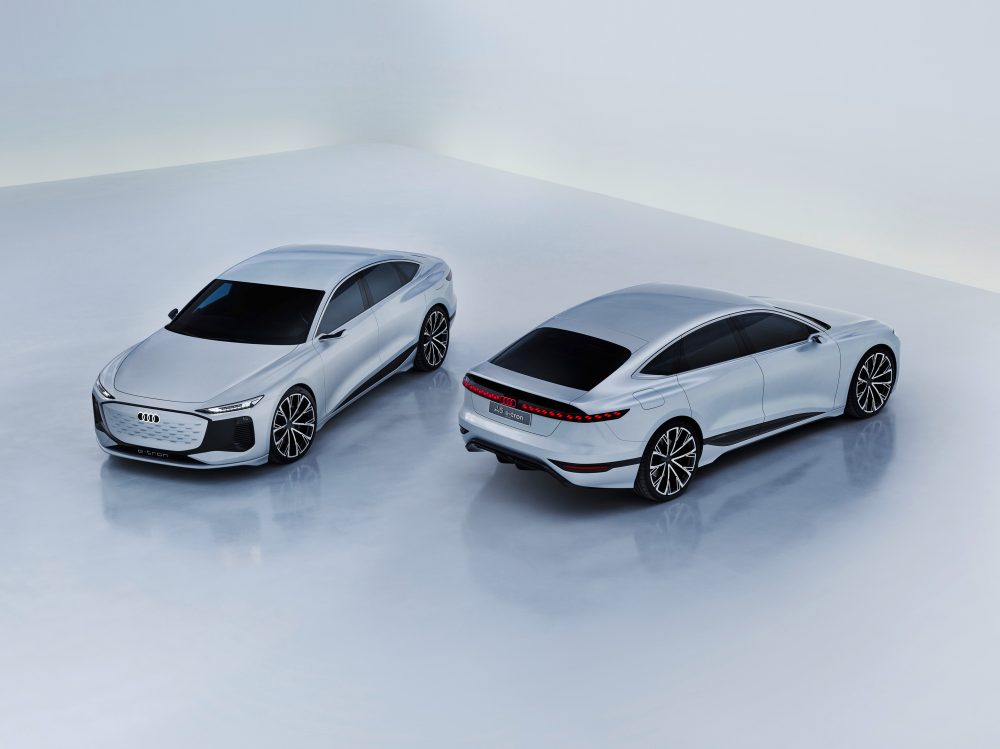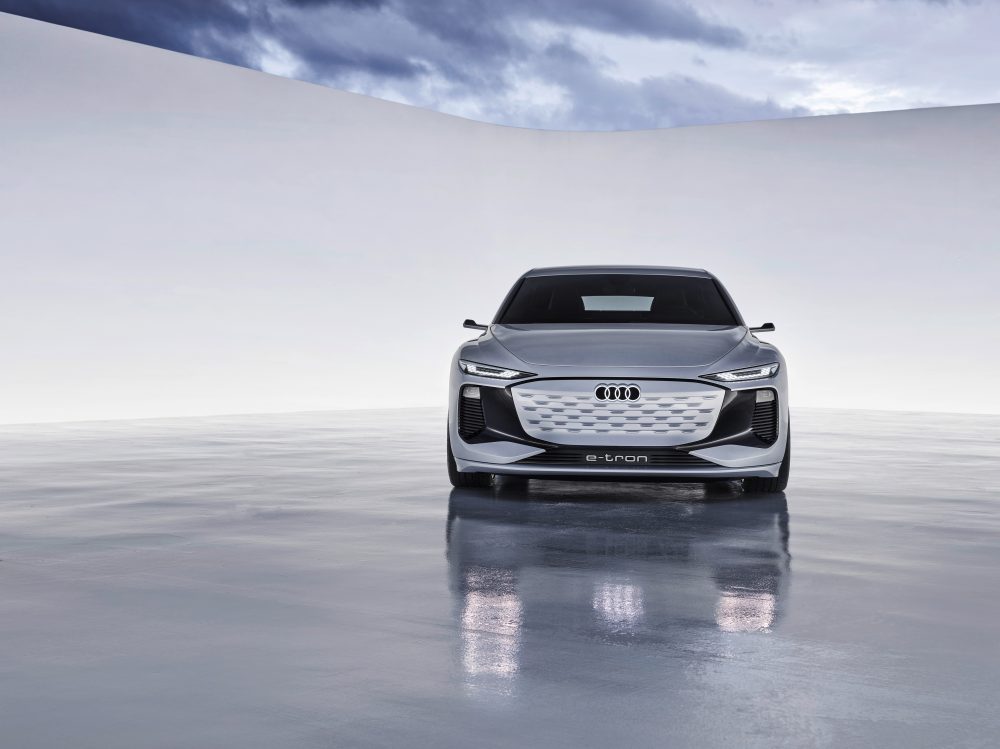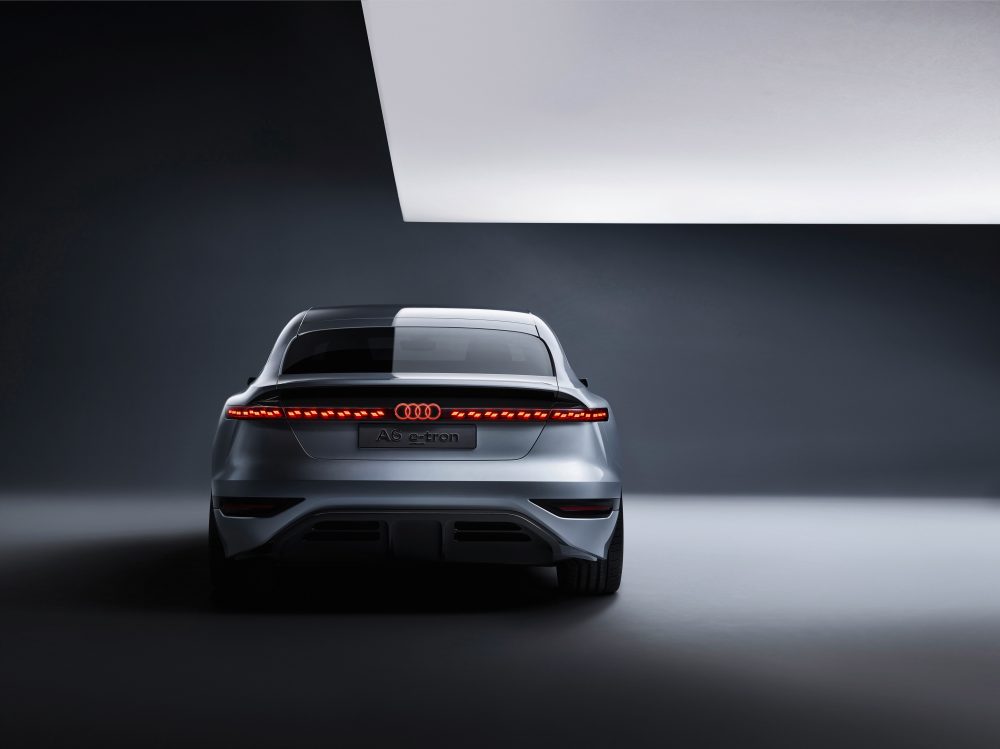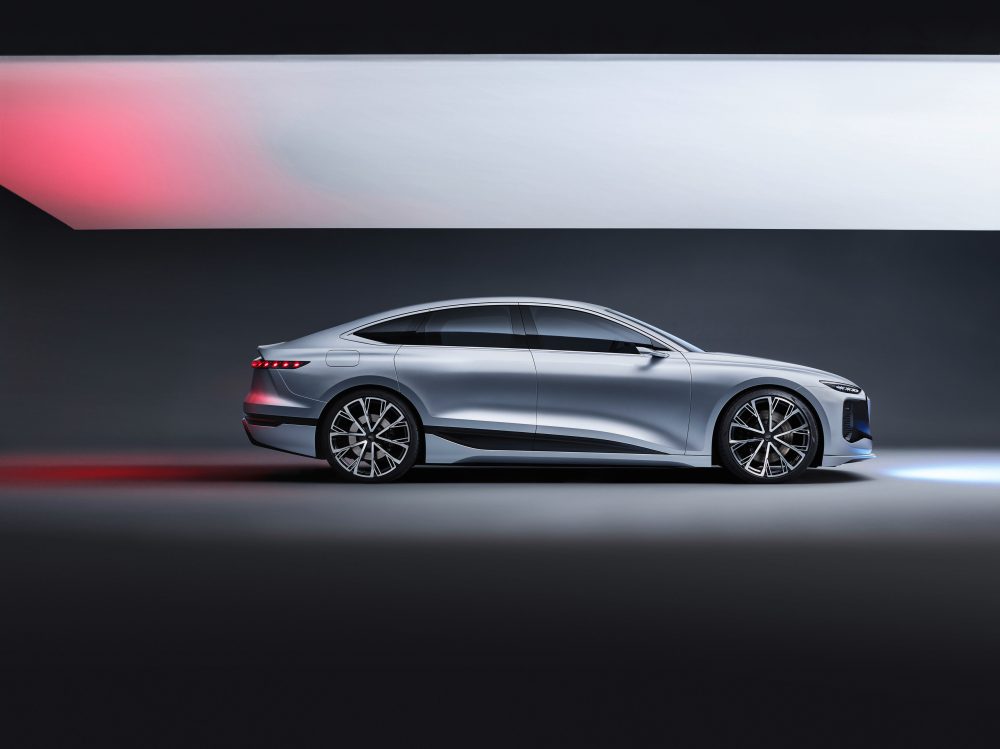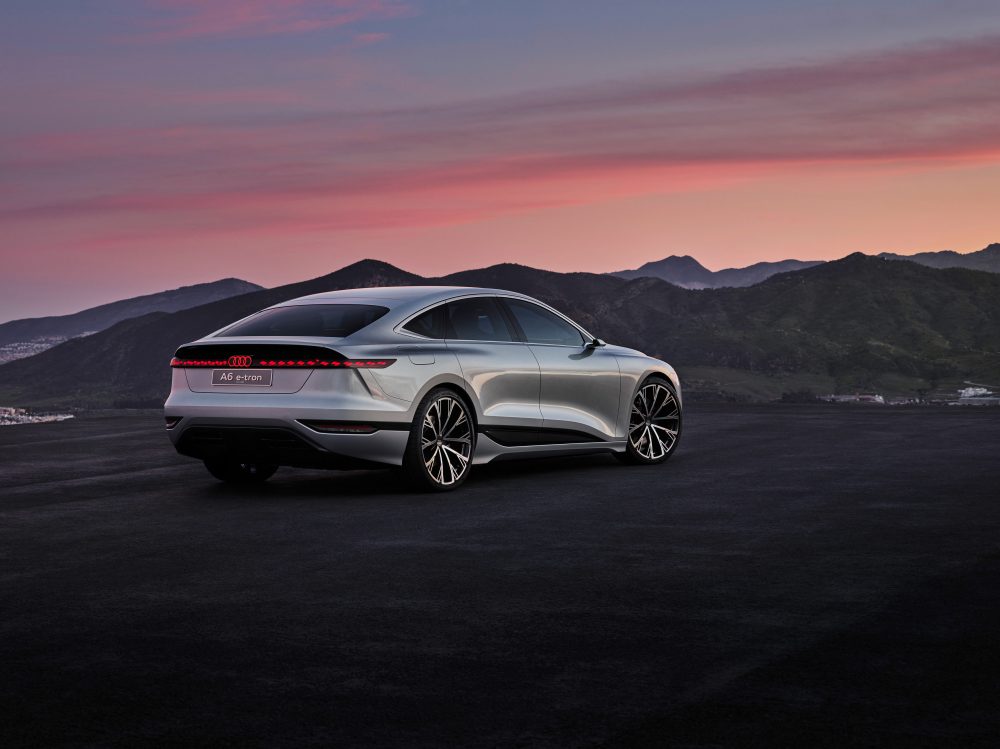
Audi has just shown the future of their electric sedans with the A6 e-tron concept, which debuted at the Shanghai auto show today.
The sedan is based on a new platform that Audi is calling “Premium Platform Electric” or “PPE” for short, developed in collaboration with Porsche. This platform will enable Audi to offer several new vehicles, with the first hitting the road in late 2022.
The A6 e-tron concept boasts the impressive specs that one would expect from a premium electric vehicle. The A6 will have a 100kWh battery, and be able to charge at up to 270kW on an 800 volt charger. Audi claims its 350kW (469hp) motor will push the car from 0-100 km/h (0-62mph) in less than four seconds.
The battery is good for a range of 700 km (435 miles) on the WLTP cycle, which translates to about 390-400 miles on the EPA cycle. While we don’t have final efficiency numbers yet, and these are all just estimates for a concept car, this would put the car in line with the most-efficient electric cars available today. Audi claims the A6 e-tron has an aerodynamic drag coefficient of just .22, which would also make it one of the least-draggy cars available.
High efficiency helps with charging too – the less energy you use to go a certain distance, the more miles you can add with the same amount of electricity. Audi says that a 270kW charger will be able to charge the battery from 5-80% (about 480 km/300 mi of range) in about 25 minutes. Or in an optimal situation, a 10-minute charge can add up to 300 km (186 mi) of range. So, despite having a similar kilowatt charge rate as the Porsche Taycan, the A6 should add more miles of range when plugged in for the same amount of time due to its higher efficiency.
Somehow the A6 manages this efficiency with 22-inch non-aerodynamic wheels. We can’t help but think they could improve by a few more percentage points by covering up those turbines.
Overall, in terms of exterior size, the A6 e-tron is about the same as the rest of the A6/A7 series. This should give it more interior space than those cars, though, due to the packaging benefits from an electric drive system. In comparison to the e-tron GT, it’s just 3 cm taller and longer.
The A6 e-tron concept incorporates several other high-tech features, including Audi’s Digital Matrix LED headlights. These allow the headlights to project images on the road ahead, giving more control over the light coming out of the headlights. Audi engineers even programmed a game for the A6 e-tron concept, which can be played by projecting the game onto a wall and controlled with a smartphone:
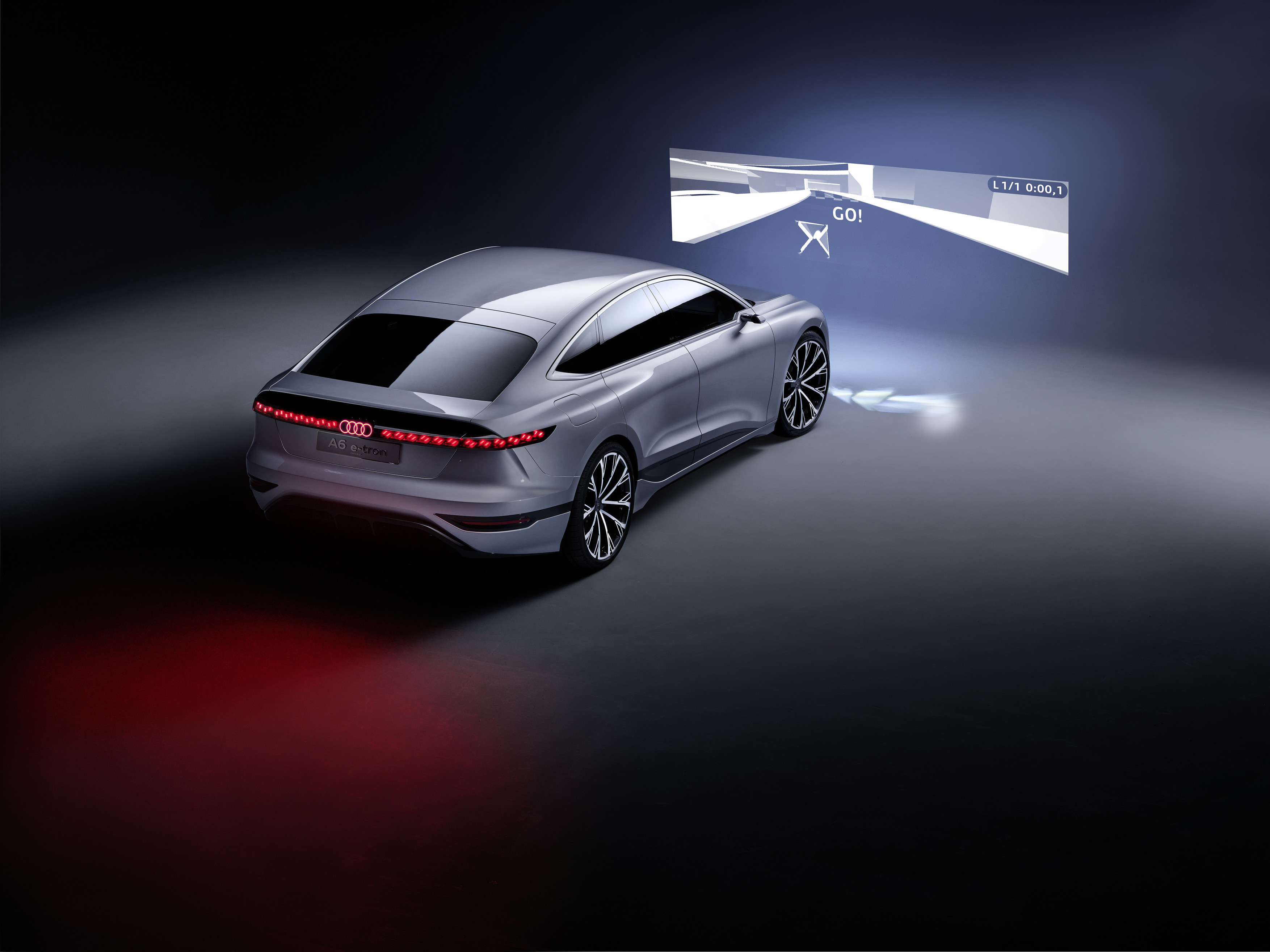
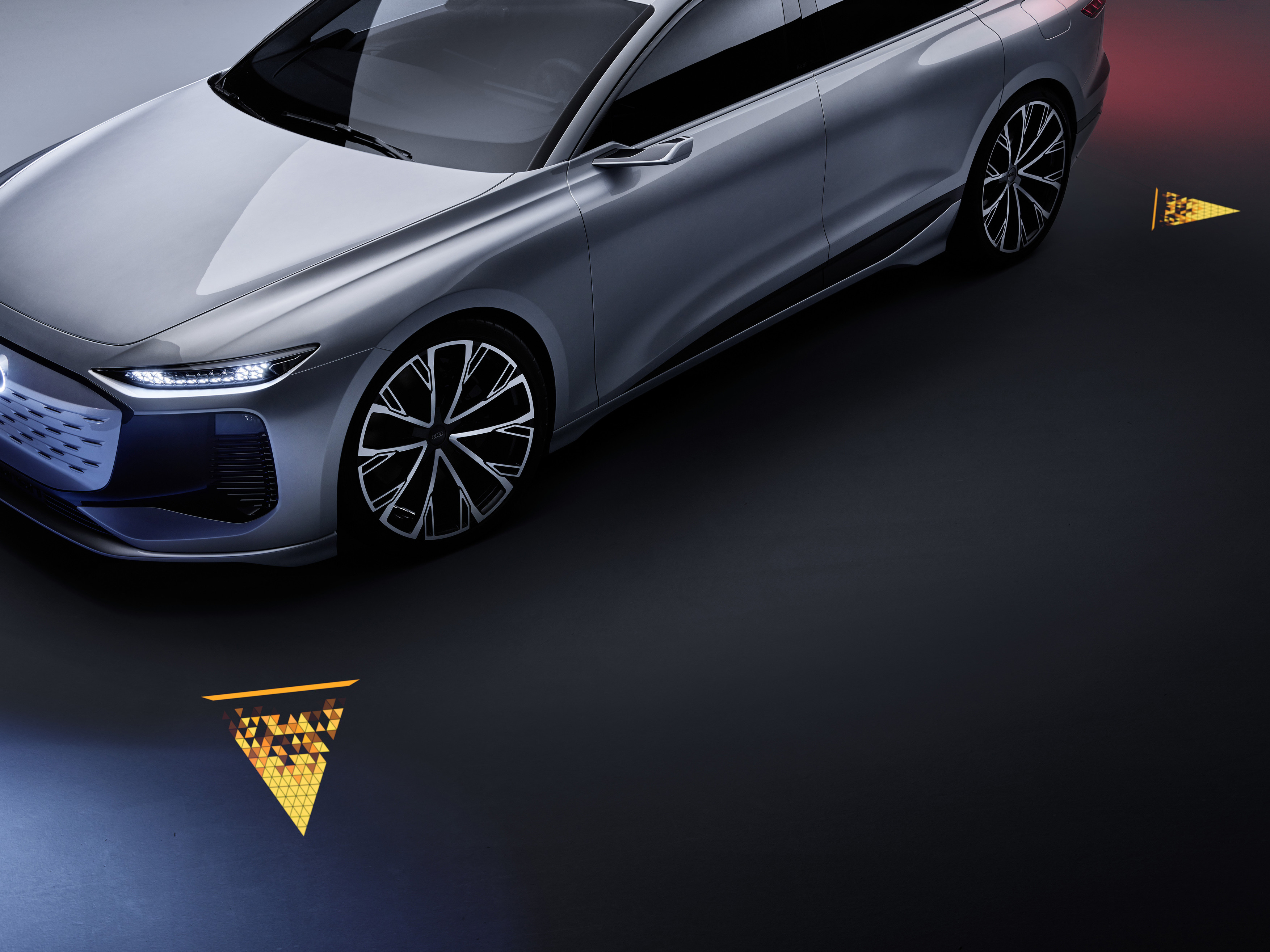
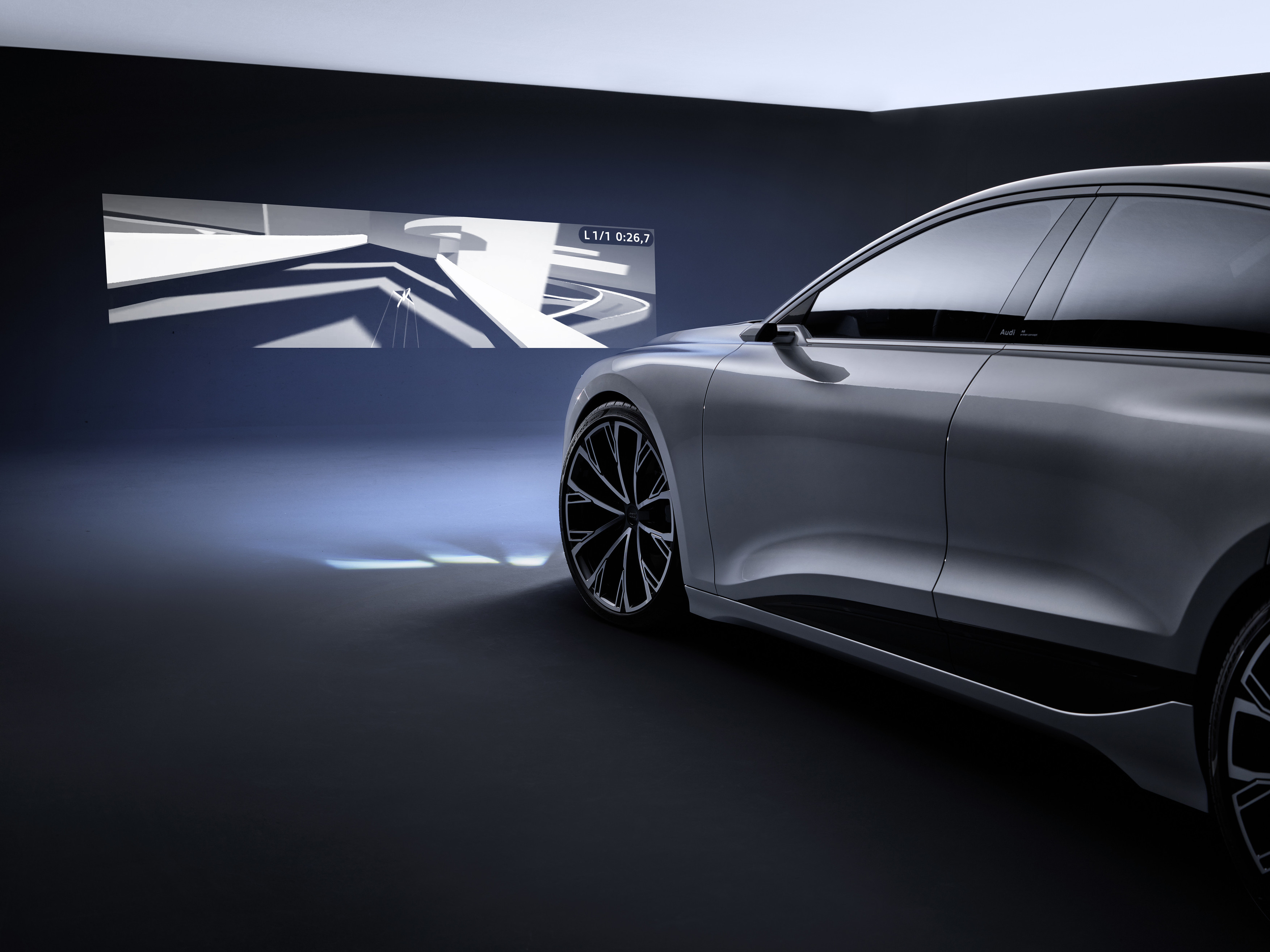
Audi has also included side projectors that can illuminate the ground with various symbols. One possible use suggested for these by Audi is to warn cyclists when a driver is about to open the door.
While the A6 e-tron is only labeled as a “concept” so far, it’s likely that the production version will be very similar to the concept released today. A similar thing happened with the Q4 e-tron, unveiled last week in production spec, which is not far off from the concept version we saw two years ago.
The A6 e-tron is expected to hit the road in late 2022. Pricing is obviously not available yet, but the gas-powered A6 starts in the mid-$50K range, so we’d expect it to be significantly cheaper than Audi’s other electric sedan, the six-figure e-tron GT.
PPE platform – more EVs to come
Perhaps more interesting about today’s reveal is the PPE platform. This is the culmination of many years of effort between Audi and Porsche. They first announced their cooperation on this platform way back in 2017.
Despite the now odd-sounding name (perhaps the name is a few years old, but we’ve heard “PPE” – “personal protective equipment” – all year, and do you really want to associate your car platform with the coronavirus?), Audi says that this flexible architecture will allow for more electric cars in the future.
The A6 concept is just the first Audi we’ve seen on this new platform, and Audi plans to offer cars based on the PPE platform globally. Porsche will use it, too, with their first PPE model being the new electric Macan. Other Audi electric vehicles have used the VW MEB and Porsche J1 platforms.
The PPE platform leverages the benefits of electric drive in a familiar configuration – a large battery, low to the floor of the vehicle, placed between the axles. As we’ve seen in many other vehicles, this allows for a lower center of gravity and better chassis rigidity, improving handling. It also helps engineers with packaging considerations, removing the need for a large engine up front and a transmission tunnel to bring power to the rear.
Audi will still offer “quattro” drive configurations with motors both up front and in the rear, allowing for all-wheel drive. These will likely be more performance-oriented versions, aiming for that sub-4-second 0-60 time mentioned above. Audi will also offer “basic version” of the vehicle with a single rear motor (not front, yay!), optimized for maximum efficiency (and lower price), rather than performance.
Audi plans to bring cars based on the PPE platform to market as early as late 2022. The A6 e-tron will be the first, as Audi’s C-segment entry into the family. But Audi also plans D-segment and B-segment cars on the PPE platform, and perhaps even SUVs and CUVs.
Electrek‘s take
While Audi has done their fair share of vaporware electric vehicle concepts and press releases in the past, times have changed. Now we’ve got what looks like a very solid entry, at what we imagine will be a significantly lower price than the six-figure e-tron GT, and it might even be available in as little as a year and a half.
It looks nice, all the specs sound as good as you’d want them to be (except maybe too much range), and it comes out soon. There’s not really much to complain about here (at least yet, until we hear the price). Can’t wait to see it action.
Thankfully, in conversations with Audi executives – and Voltswagen group executives as a whole – it’s clear that they are all (finally) taking electric vehicles quite seriously. They’re putting their money where their mouth is too, with Audi recently announcing $12 billion in EV investments, with 20 all-electric models planned by 2025.
We’ve seen the start of this flood of new models. The A6 e-tron announced today, the e-tron GT recently went into production and we just saw the Q4 e-tron unveiled last week. At this point, we can expect that concepts like the A6 do actually portend a real release coming down the road. Phew.
Audi’s EV sales are growing, too, with their 2020 all-electric sales representing about an 80% increase over their 2019 sales. We hope that trend continues, because despite such impressive growth… this still only accounts for under 3% of all of Audi’s global sales.
So, as always, we must remind our readers that while Audi (and parent VW group) deserves credit for saying the right words about electric cars, a vast majority of the cars they sell still spew death out of their tailpipes. With the world currently in a climate emergency, we have to stop selling gas cars that will continue to pollute the world for a decade or more after they leave the dealer’s lot. Audi has pledged to move to a carbon-neutral production process, but gas cars make a vast majority of their pollution in the use phase, not in production.
So as always, we encourage as much acceleration as possible. Luckily, today’s announcement, not just of the A6 e-tron concept but with more details on the PPE platform as a whole, seems to be an answer to our desire. We can’t wait to see more vehicles on this platform, and hopefully see them on the road in as short a timeline as Audi has suggested with today’s concept release.
Subscribe to Electrek on YouTube for exclusive videos and subscribe to the podcast.
Author: Jameson Dow
Source: Electrek



